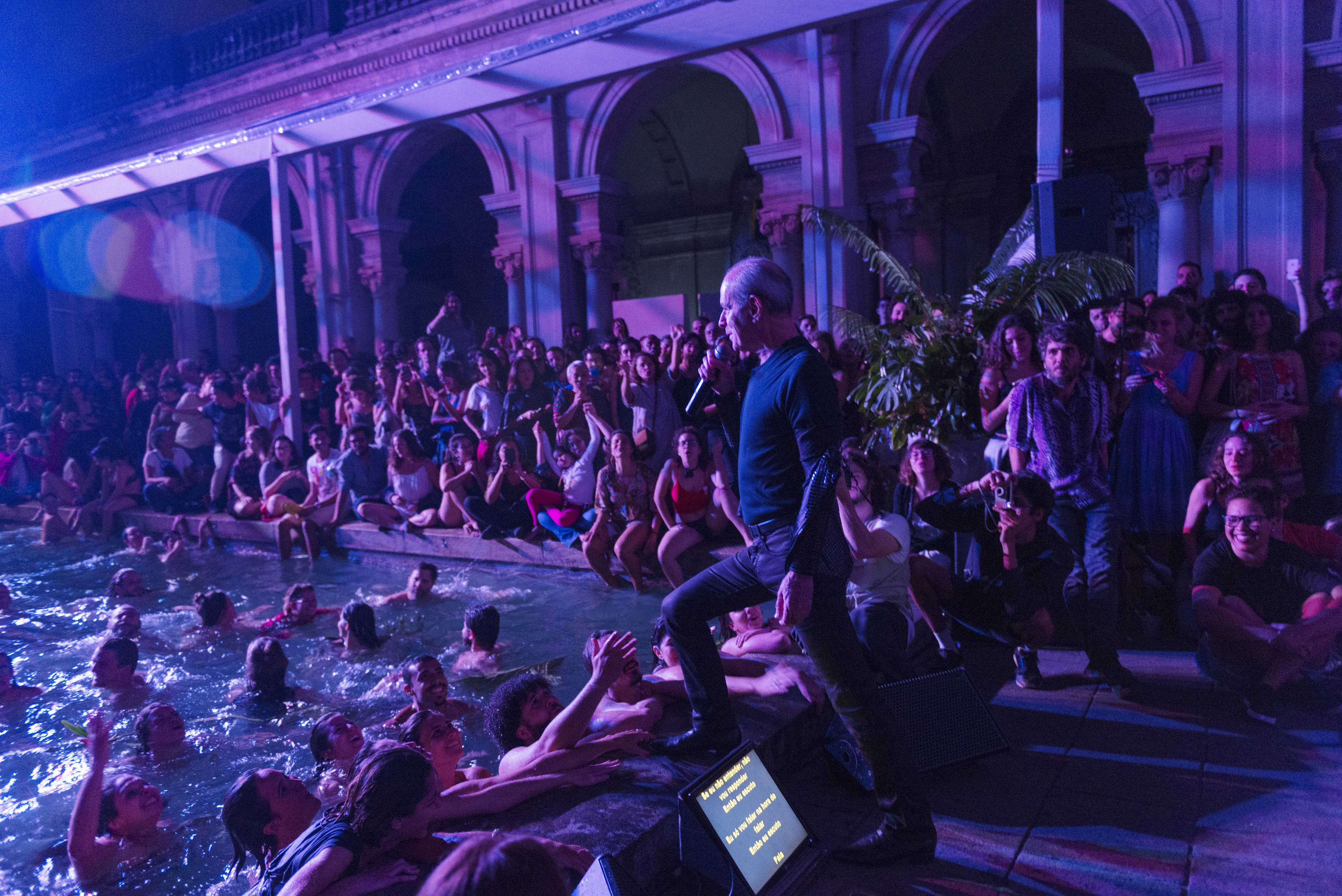Pedagogical (Re)mediations and Micropolitical Scales in Latin American Artistic Activism
05/18/2023
What this type of recent art activism practices have raised through their interventions is the importance of disputing the mediations and infrastructures that constitute the fabric of the common [...] They are no longer epic actions (notably masculinist) that seek a radical revolution, but rather situated exercises intersectionally entwined into small spaces of everyday life.
Beyond the so-called "left turn"1 and the return of conservative right-wingers, contemporary Latin American politics has undergone an intense and vibrant process of disputes over the life in common, regardless (or in spite) of any hegemonic political tendency. These tensions have been articulated through citizen participation, social uprisings, indigenous resistance movements, activist groups, and other forms of communality, emphasizing the work towards the common not as a given structure but as a being-with-others in constant (re)production and conflict.2
Such insurgencies are characterized by experimenting with a "nomadic organization of the common,"3 that is, with the articulation of assemblages that challenge the establishment to imagine other shared modes of existence that embrace the possibility of difference, disagreement, and a coexistence, embodying the communitarian sense without its heavy identity and essentialist burden.4
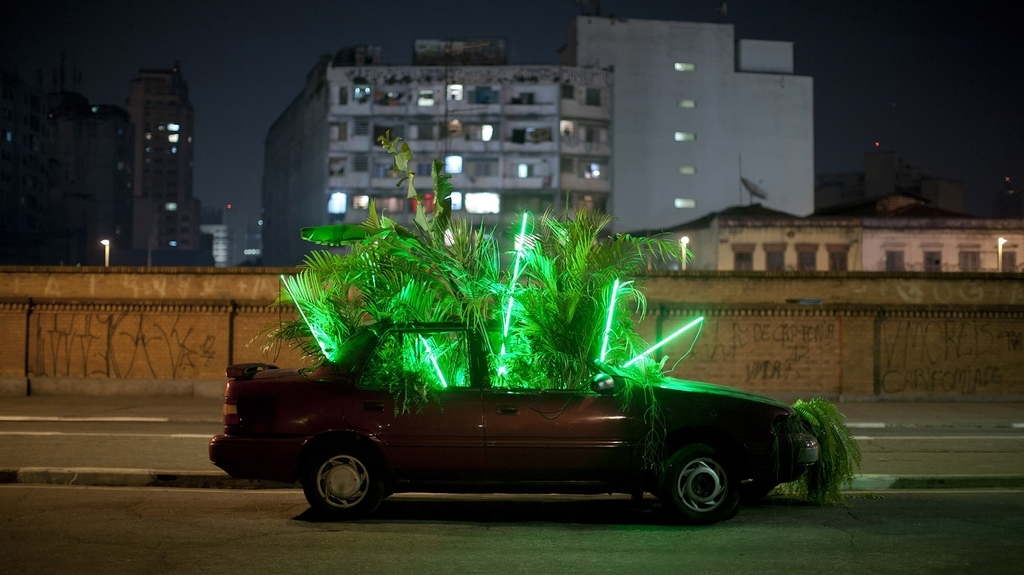
The way both neoliberal agendas and the new conservatism, as well as the failed progressive programs, deny any kind of otherness in an attempt to standardize the political spectrum in binary formulations, has stirred these pulsating nuclei of dissatisfaction and futures-in-common.5 In them, new horizons for futurity are at stake, departing from a speculative exploration of our here and now. From this uncertain communality, these political agencies understand that "the future is what we cannot see, unless we turn around and look back."6 It is, then, a matter of forms of political imagination that weave a tomorrow with the threads of yesterday, which we must reinvent together.7
As I have argued in previous research, in the face of this diverse and fragmentary political landscape, strategies of resistance and activism that confront the dynamics of power and oppression have also undergone a profound process of transformation and rearticulation. The artistic activism practices traditionally used by resistance movements in Latin America no longer function under the logics that once guided the underground political struggles, such as the cases mapped by the researchers of the Red de Conceptualismos del Sur network between the 1960s and the 1980s,8 or the "sociological range" proclaimed by critic Juan Acha for the Latin American art practices that were politically-engaged with their contexts.9 Beyond traditional ideological antagonisms, the current Latin American artistic activism is inserted within a genealogy that needs to be thought of “in tension with the violent exploitation of global late-capitalism and allegedly progressive governments, [...] detaching itself from both the inoperative forms of traditional militancy and the more mercantile and narcissistic disciplinary preconceptions of contemporary art.”10
What this type of recent art activism practices have raised through their interventions is the importance of disputing the mediations and infrastructures that constitute the fabric of the common. Unlike their predecessors—which operated through clearly outlined political ideologies and were articulated through hard militancy—these practices of artistic activism insist on disputing the common from its constituting heterogeneity, in order to stimulate "new social meanings through an experimental engagement with material processes." That is to say, rather than thinking of the political as a merely ideological struggle, we think of its singular materialities and the platforms that allow us to intervene in them and convey countless agencies for our shared lives.
In this text, I highlight two specific qualities of this type of activism: its micropolitical scale and its pedagogical forms of (re)mediation. On the one hand, these practices are characterized by a micropolitical horizon that allows them to think locally while circumscribing themselves within the most urgent global agendas for social change.14 They are no longer epic actions (notably masculinist) that seek a radical revolution, but rather situated exercises intersectionally entwined into small spaces of everyday life. On the other hand, these practices no longer follow any disciplinary structure of know-how but resort to heterogeneous socio-technical mediations, that is, diverse "articulations between [artistic-political] communication practices and social movements."15 The (re)mediations proposed by these practices of artistic activism imply a relationality between different forms of collaboration, through community pedagogies without specialized knowledge, based on attentive listening and a horizontal dialogue, imagining creative forms for the experience of the common.16
Based on these two qualities, the artistic activism practices that I am interested in portraying here revolve around the creation of “embryos of other worlds in a virtual state;”17 that is, practices that herald possibilities for different futures from within a fragmented and hesitant present. If, as Donna Haraway suggests, “it is important to know which stories create worlds, which worlds create stories,”18 then I believe that such practices of artistic activism are particularly interested in imagining other worlds, other ways of living, by experimenting with insubordinate, challenging, bold narratives and materialities, which break the continuity of the present to narrate it in an unexpected way.
From the futures invoked by this double enclave of micro-scales and (re)mediations, I will map five recent cases of Latin American artistic activism that do not intend to define a new type of art or politics. Instead, they seek to question the concepts that art history, institutional politics, and formal education have bequeathed us, to provoke estrangements and overflow them toward territories that are yet to be explored.19
Everyday Utopia(s)
The collective Acción Directa Autogestiva (ADA) came to life in Puebla (Mexico) around 2007, as an experimental articulation between artistic creation and political action. For Itzell Sánchez and Mayeli Sánchez—two of its founders—the collective responds to an anarchist and undisciplined drive that reveals “the constant formation of new unforeseen orders”20 for the self-determination of the social mobilizations with which it articulates itself with. One of ADA's main struggles revolves around the free use of public spaces and against the sweeping processes of gentrification and real estate speculation in Puebla. Such is the case of Okuparte: por la defensa de los espacios públicos and No te calles, usa las calles, which are interventions that have taken the form of street festivals, debate forums, and performances in collaboration with local artists, journalists, researchers, and activists. On the other hand, ADA has also been involved with environmental struggles, as in the "March for the defense of the land" in Ixtacamaxtitlán—a municipality in the northern sierra of Puebla, where a macro mining project is being planned. Or in the "Peoples for the land" caravan against the G20 summit (which took place in 2012 in Baja California Sur), in which ADA participated through an action with the Mazorca Libertaria—a character halfway between a wrestler and a superheroine, personified in a corncob that fights for the people’s food sovereignty.

In these and many other actions with various local collaborators, ranging from feminist self-defense workshops to hacktivist rallies to community theater stagings to self-published anarcho-punk fanzines, ADA has been an anarchist disruption that intervenes unsubordinately in its environments, learning from “the voice of rage, dignity, organization, and radical tenderness.”21 On a local scale, through heterogeneous (re)mediations, ADA questions the community know-how to imagine other ways of living in a city such as Puebla, ruled by inequality and impunity.
Hacktivist Entanglements
EnRedadas is a feminist art and technology activist group founded by Gema Manzanares and María Martha Escobar in 2013 in Managua, Nicaragua. It is a multimedia platform to exchange experiences and political and creative practices across technology, which build collective empowerment tools for Nicaraguan women and girls.22 EnRedadas has co-organized two important initiatives on art and technology in the country. On the one hand are the FemHacks, which are cyberfeminist gatherings of reflection on digital security, cyberbullying and gender violence, digital feminist self-defense, open-source software, and other narratives regarding the techno-political mediations of the Internet for women involved in various practices of self-management and local activism. On the other hand is the LadyFest, a festival aimed at making visible the artistic production of young Central American women, from a critical reflection on art for social change, feminist technologies, and local self-management practices. EnRedadas borrowed the LadyFest format from the one traditionally organized in the United States, giving it a situated approach, customizing the political and creative implications of the use of technologies in the region, through spaces for training and reflection on practices such as graffiti and illustration, photography and video, musical composition, cabaret theater, among others.
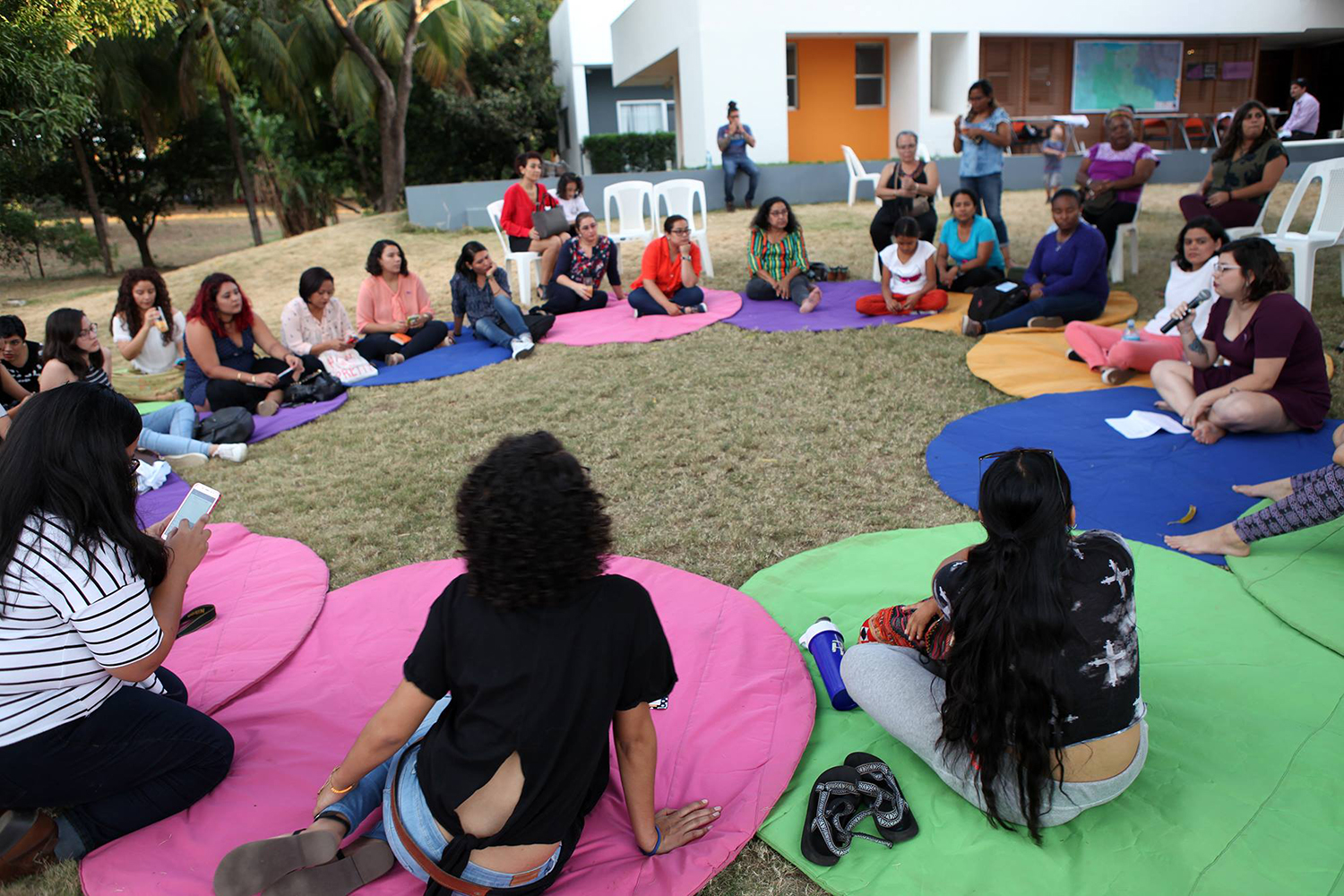
Despite being a collective with a strong online presence (spanning websites, blogs, social networks, virtual campaigns, and hacktivist actions), EnRedadas also facilitates face-to-face meeting spaces to produce forms of recognition and empathy, to break the gender gap around women's access and participation in digital technologies. Therefore, dialogue and collaboration (both online and offline) are the main strategies of this group, betting on ways to generate new communities of meaning and solidarity.
Lyrical Experiments
Labo Ciudadano is a laboratory of action and reflection on nonviolence and human rights. It emerged in the streets of Caracas (Venezuela) during the wave of protests of 2017. Since then, it has been activating devices to create spaces for conversation and confront the political polarization, thus rebuilding the social fabric “from below and to the sides.”23.
A key device in Labo's various experiments has been El Parasistema: a series of workshops and online pedagogical activations that began seeking to circumvent the social distancing imposed by the pandemic and experiment with new ways of keeping alive the citizen mobilization and articulating strategies of denunciation.
These activities on collective tools were meant to allow catharsis and channel the sustained social unrest through creative expressions: poetry, photography, video, stencils, cardboard books, comics, music, narrative, and other strategies were proposed for weaving connections in the search for different ways to imagine politics. With these workshops, Labo managed to articulate activists from diverse ideologies and political causes, engaging in dialogues in “the spirit of sharing, rather than convincing.”24
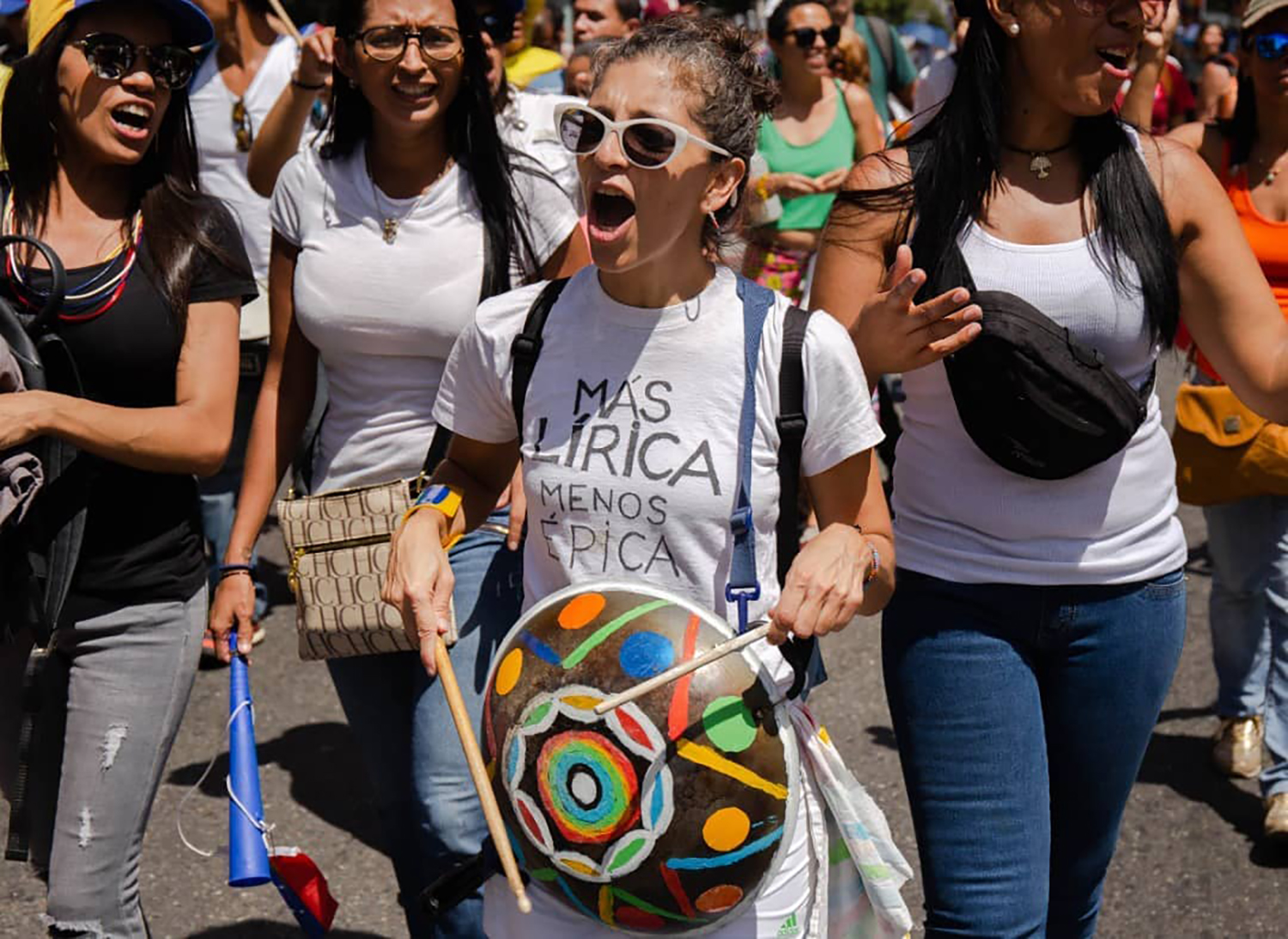
By insisting on creative practices as a space for experimenting with different ways of living together, Labo Ciudadano activates one of its main mottos: “more lyrics, less epic,”25 which represents a radical shift with respect to the course of recent Venezuelan politics. Far from grandiloquent narratives, Labo's bet is on the small scale, detached from titanic eagerness, without trying to overthrow the government systems or transform society as a whole. Instead, they aim to generate specific connections by activating localized mobilizations, gradually weaving a new (con)text of citizen participation.
Designs for Being-Together
BijaRi is a creative center in São Paulo (Brazil) where art, design and technology projects converge. Its members come from the fields of architecture and urbanism, so the collective has systematically emphasized the aesthetic-political dimension of the public space. Their projects are characterized by a multidisciplinary approach that brings together collaborators from diverse areas to produce critical interventions around collectivity, on how we inhabit a territory, and on the platforms, interfaces, and means of social interaction that make this communal living possible.26
Many of BijaRi's works are mainly concerned with ecological problems, as is the case of Não vai ter Copa (2016) and Praças (Im)possíveis (2017), two actions that used choreographic designs and participatory performative devices to draw attention to urban life problems and the climate crisis. This same concern shows in their video performance Cura (2021), in which they question the conditions of access to water, food, and breathing clean air, amidst the dystopian environment produced by the quarantine due to the coronavirus pandemic.
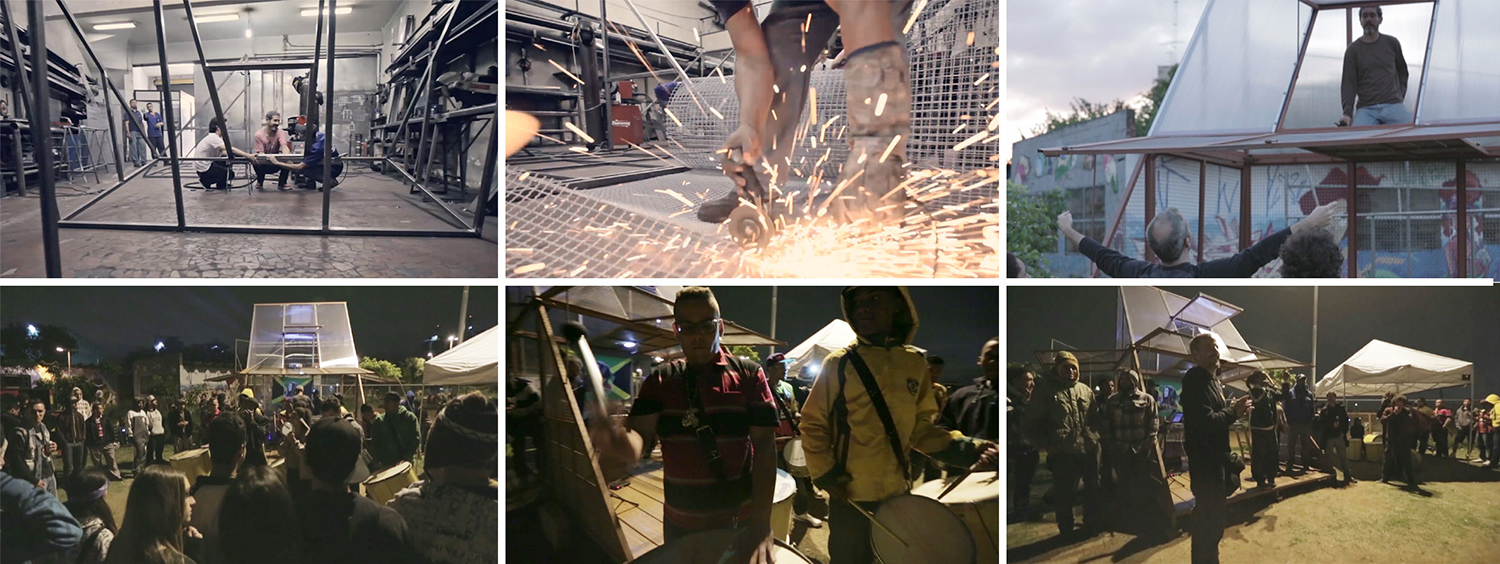
BijaRi experiments with participatory design methodologies to explore community life and the socio-political mediations produced by both the public space and digital technologies. The most iconic project in this direction was Prisma Cultural (2015), an itinerant structure that could be assembled and disassembled in different neighborhoods and locations of São Paulo to host audiovisual screenings, discussion forums, community meals, music fairs, and workshops on the use of technologies for the community, among other activities. Prisma Cultural implies a break with the way that power relations have been conceived in the city, proposing the insertion of other types of socio-technical mediations that enable unsuspected spaces to learn together, gain knowledge about our territories, and imagine ourselves collectively.
The Political Agency of Slips
Based in Chile and Argentina, Errorist International is a heterogeneous collective made up of worldwide collaborators. Loreto Garín Guzmán and Federico Zukerfeld, its founding members, promote a “philosophy of error” in a double sense: to err as a mistake and to wander without a clear direction.27 The very name of the collective is already a provocative phonetic slip: a clear allusion to the imaginary counter-terrorism that inaugurated the 21st century, according to the discourse of the Global North. This group sees itself within a war waged, mostly, through forms of social imagination. Error as the “organizing principle of reality”28 implies, for the errorists, a commitment to forms of life that cannot be caged within the standardizing neoliberal logic. Of course, the Errorist International leans towards global collaboration, but it does so thinking from its home region: the Southern Cone. The wounds from the military dictatorships of the last century and their neoliberal continuities have set the tone for most of its actions.
Among the vastness of the collective's interventions, one stands out for clearly condensing the errorist ethos: Epopeya de la soja genocida, una trans-gedia errorista en tres actos. In the people’s march of March 24, 2013, 37 years after the military coup that initiated the last Argentine dictatorship, the errorists took to the streets dressed as choclos (corncobs) to protest against the seed treatment laboratory that the multinational corporation Monsanto intended to install in Córdoba, the second largest city in Argentina.
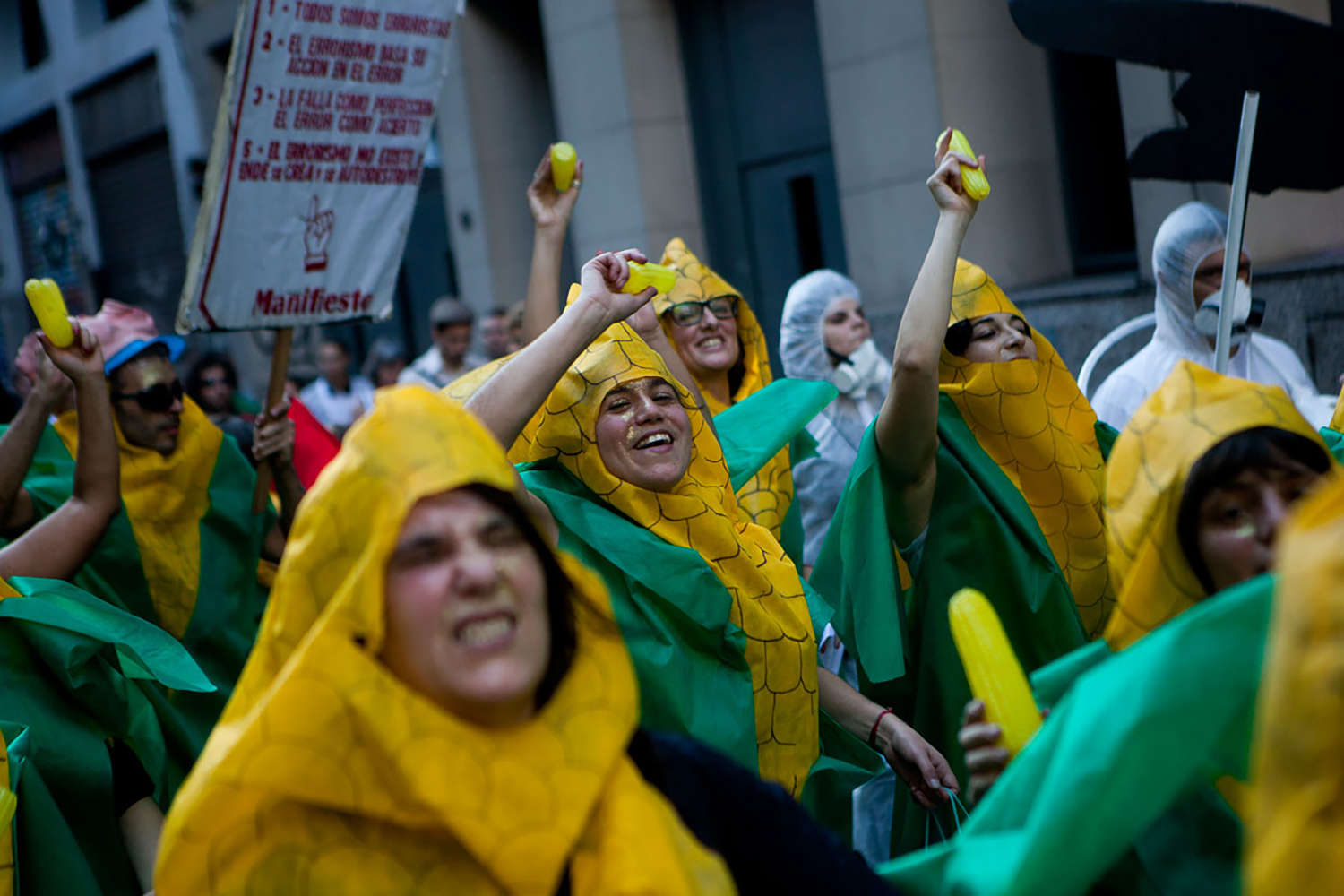
The action consisted in some sort of pitched battle that took place in different public scenarios (from squares and crowded avenues to fast food restaurants), where other participants dressed as scientists sprayed those dressed as corncobs with liquids that represented toxic agrochemicals and other substances used to genetically modify food. This epic has also been activated through actions such as the Museum of Neo-Extra-Activism, a wandering project they have presented in different countries, which reflects on the practices of plunder and global extractivism. As part of the Museum of Neo-Extra-Activism, they have developed exhibitions and documentation rooms, community workshops, street actions, and other mediations to highlight the surfaces of exploitation and precariousness of daily life through humor and criticism.
(Unexpected) Assemblages of the Common
The actions of ADA, EnRedadas, Labo Ciudadano, BijaRi, and the Errorist International create a constellation of bold artistic-political experimentation in the turbulent context of our present. Far from being pigeonholed as “leftist” activist practices, or from publicly positioning themselves as regular political movements, these collectives seek heterogeneous articulations to harbor other possible futures. Some that can circumvent all vertical politics to explore horizontal and collective assemblages within a “common” that is not tied to a single form but is always mobile and mutant.
By experimenting with shifting articulations, these actions envision common learning, expanded and overflowing pedagogies, untamed, liminal, and, of course, uncomfortable, disarranged forms of coexistence that disorganize the current status quo to receive the uncertain configuration of the forth-coming. From this uncertain monstrosity, these practices of Latin American artistic activism intend to (re)mediate the present, that is, to seek solutions for it, but also to make it mediate again: to spin it around all its possible stories to discover other ways of being together.


